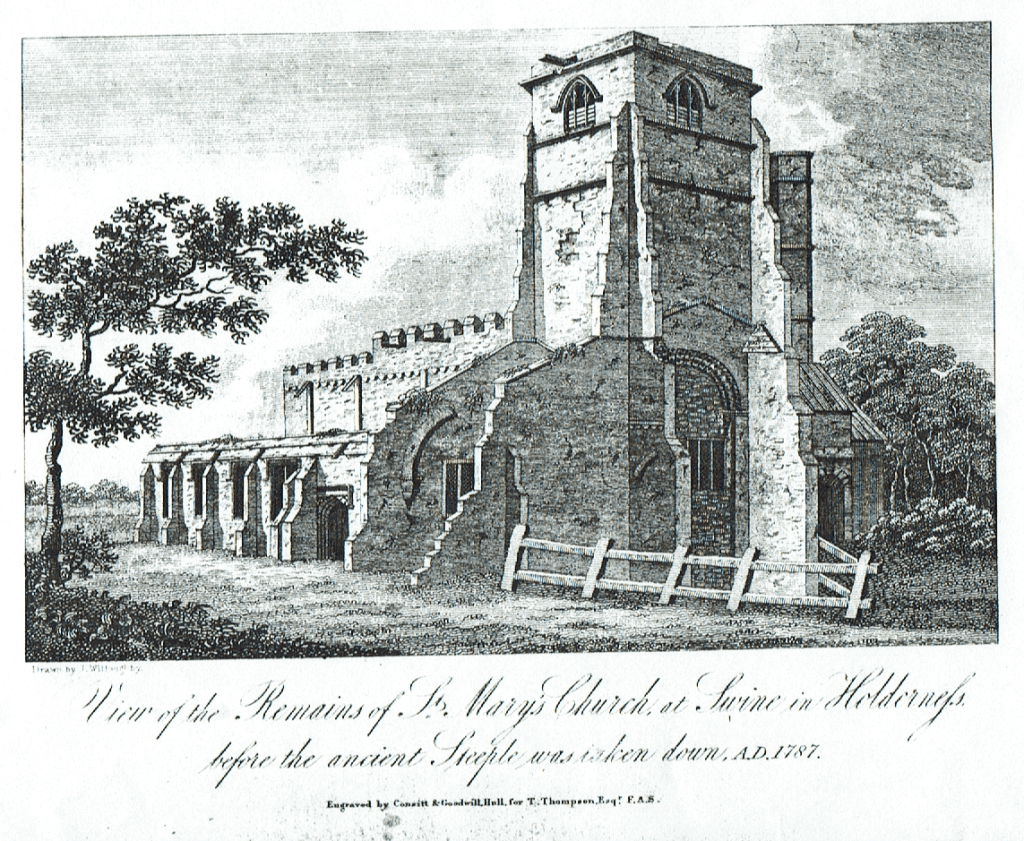
Above is an 18th century engraving showing Swine church post Reformation but before the tower was rebuilt in 1787 (for the church today s.p.b.s). Clearly the church of the Cistercian nunnery had a crossing tower and transepts, the bricked-up entrance to the nave from the crossing tower shows a late-Norman arch testament to the initial endowment of the nunnery, close on the heels of Meaux Cistercian monastery, in the mid 12th century. The chancel/nave was/is aisled but seemingly the original nave had no aisles. An attached spiral staircase accessed the belfry. Before the Reformation the nave would have almost certainly doubled-up as the parish church while the choir (surviving) would have been the nun’s church, so at some point post-Reformation the parish decided it could no longer maintain nave and chancel, moved to the original chancel and either demolished the nave (East Riding churches/buildings often incorporated whatever building materials could be obtained, Paull church being a good example) or allowed it to fall into long-term disrepair. Medieval Swine was a very large parish and some outlying areas had a chapel of ease (s.p.b.s and e.g. Skirlaugh).
The interior of the church contains many interesting features although I have not seen them as the church is usually locked. Apart from the arcade piers early 16th century stalls and misericords remain, a couple, in the tradition of misericords, being disrespectful to nuns and the pre-Reformation Catholic Church. Added to this what David Neave describes as the ‘finest collection of medieval monuments in the East Riding’ (Pevsner, East Riding, p. 719) – principally four commemorating members of the Hilton family (lords of the manor) and created across two generations between 1370 and 1410.
Thomas Thompson (s.p.b.s) considered that Swine nunnery might have included some monks, the evidence quoted being from Dugdale’s Monasticon Anglicanum (Sir William Dugdale, 1605-1686, antiquarian and royalist who published M. A. in 1655) where a grant of land to Swine Nunnery refered to ‘brothers and sisters’.